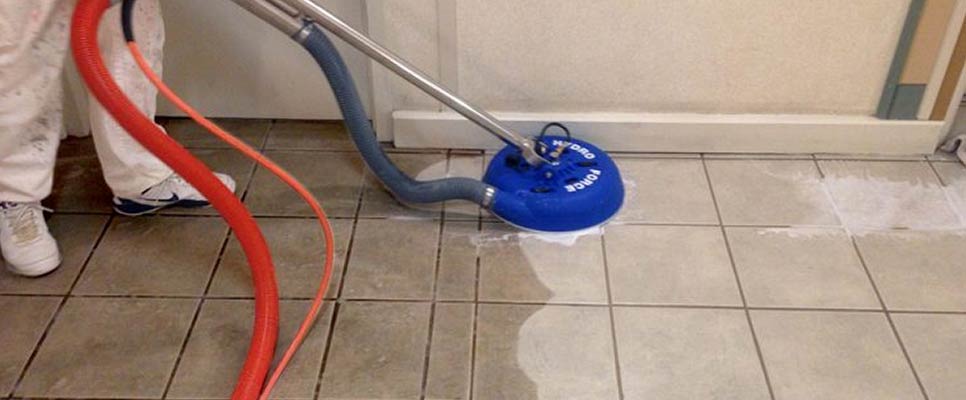The sight of efflorescence on tile and grout may mar an otherwise exquisite bathroom shower design. In addition to being unattractive, it may cause plumbing issues and tile damage if not removed. The use of sharp devices to remove efflorescence is a typical source of surface scratches. We’ll go through the best practices for removing efflorescence. Before we can advise you on the best way of efflorescence removal, you must first understand the characteristics of this build-up. Efflorescence can fade away the quality of your floor. If you want to maintain the quality and looks of your home, then it’s the right platform. Tims Tile Cleaning Sydney help you to know how to remove efflorescence from tiles. Continue reading:

What Is Efflorescence?
After the water evaporates, a coating of mineral and calcium deposits on the surface known as efflorescence will remain. The leak is caused by moisture or water under the tile from the installation procedure. Water reacts with the minerals in the concrete’s mud layer, expands, and eventually seeps or drains outside. If you don’t get rid of it on time, it might harm the tile and grout in your shower and clog the drain.
What Is The Purpose Of Efflorescence?
The major cause of the efflorescence is the presence of calcium and mineral deposits in the concrete mix used to install the tile. Furthermore, efflorescence occurs when water penetrates under the tile and interacts with the minerals already there. This treatment reaches the topmost layers of the surface, where water vaporises. The particles ultimately wind up on the grout and tile surfaces. Thus, efflorescence generation is limited to porous surfaces. Because of its porousness, water may flow easily in both directions.
The general population often misidentifies efflorescence as mould. Unlike mould, however, the white cement-like residue is neither communicable nor dangerous to human health. It has no effect other than to ruin the shower floor. Now that we know what causes efflorescence, let us understand how to get rid of it.
Threats Related to Efflorescence:
- The appearance of efflorescence on the shower grout and tiles indicates the presence of water behind the walls or under the flooring. If nothing is done to remedy the moisture, it may cause mould development, structural degradation, termite infestation, and other problems in the future.
- If there is an abundance of efflorescence, drains may get plugged and tiles may fracture. If this continues, the cost of repairing the tile and grout will increase.
- It is not harmful to your health.
How Can Efflorescence Be Removed?
Though the deposit may gradually disappear over time, chemical treatment is often necessary. How to Remove Efflorescence from Tiles Using Chemicals; Learn now:
- Use only proprietary items that are acid-based, safe, and authorised for use in your particular application, as directed by the manufacturer. Allow it to stay for a few minutes before thoroughly rinsing it with clean water.
- Before administering the therapy to the whole region, treat a small area as a test. Before treating a whole floor or wall, practise ensuring you have the proper technique.
- Use acid cleansers on newly placed tiles only after they have fully dried, since this may cause efflorescence to resurface by bringing additional soluble salts to the surface.
- Unless absolutely required, tile flooring should not be sealed. However, the installation must be completely dry and the grout must have cured to the correct colour before being used, like with terracotta tiles. The salt accumulation will be permanently trapped if it is not removed before the space is closed.
Which Methods Exist to Remove Efflorescence?
Tile and grout efflorescence is readily removed. This may be accomplished with both chemical cleaners and sandblasting. However, sandblasting may badly harm the tile’s surface. A chemical cleaning is recommended to remove efflorescence from the shower.
The following is the process for Efflorescence Elimination:
- To get access to and clean the drain in a shower, first remove the lid.
- The efflorescence mass must then be removed.
- To eliminate any lingering efflorescence, apply chemicals to the whole surface. This chemical targets the salts in the residue, totally dissolving them from the mud. The chemical solution can assist in the removal of efflorescence that has accumulated underneath the tiles.
- Efflorescence can be cleaned up, but there are also preventative precautions you may take. To protect the porous tile and grout against water seepage from the outside, the surface must be made waterproof. This is readily performed by first applying a layer of grout sealer to the whole tile and grout surface.
Conclusion:
It is really mandatory to clean the tiles and remove the stuck inside Efflorescence from them. Numbers of people are stuck at a point, on how they are supposed to do that. Following the things we have mentioned above, you will come to know how to remove Efflorescence from tiles. Consider every assistance we are forwarding to you and understand the concept of removing the efflorescence from the tiles to make the floor looks beautiful and perfect.
Published on: May 2, 2023
Last updated on: July 6, 2023
